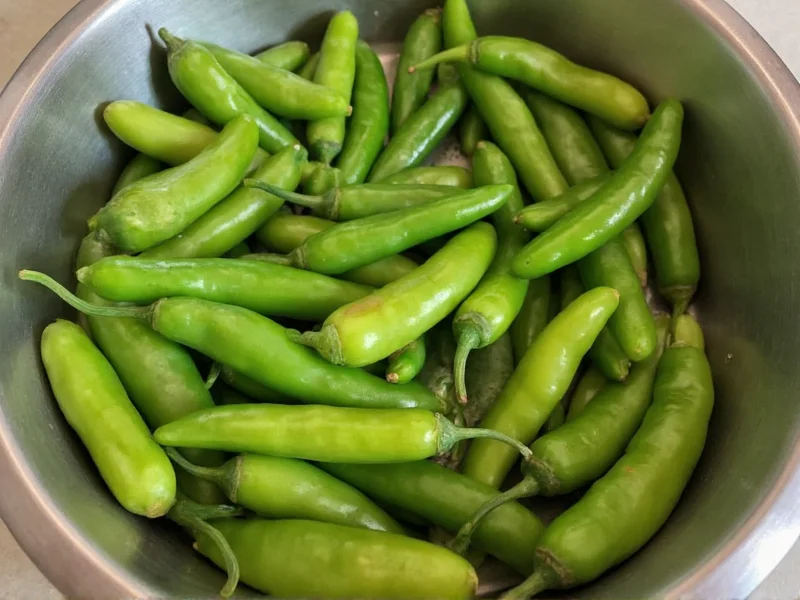The Science Behind Jalapeño Burn and Effective Relief
When you handle or eat jalapeños, you're experiencing capsaicin exposure—the oily compound that gives peppers their heat. Capsaicin binds to pain receptors, triggering that familiar burning sensation. Understanding this chemistry is crucial for effective treatment, as capsaicin is oil-soluble, not water-soluble. This explains why rinsing with water often worsens the burn by spreading the oil.
Immediate Relief Methods for Skin Exposure
When jalapeño burn affects your hands or skin, act quickly with these proven techniques:
Step-by-Step Skin Treatment Protocol
Follow this sequence for maximum effectiveness:
- Oil Application (First Step): Soak a cotton ball in olive oil, vegetable oil, or even rubbing alcohol. Gently rub onto affected areas for 30 seconds. Oil dissolves capsaicin, preparing it for removal.
- Dairy Application: Apply plain yogurt or milk directly to the skin. The casein protein binds to capsaicin molecules, neutralizing their effect.
- Soap Wash: After 2-3 minutes, wash thoroughly with soap and warm water to remove the oil-capsaicin mixture.
- Cold Compress: Apply a cold, damp cloth to reduce residual inflammation.
| Remedy | Effectiveness | Time to Relief | Notes |
|---|---|---|---|
| Dairy products | ★★★★★ | 1-3 minutes | Most effective for skin and mouth |
| Olive/vegetable oil | ★★★★☆ | 2-5 minutes | Essential first step for skin |
| Baking soda paste | ★★★☆☆ | 5-10 minutes | Mix 1 tbsp with water |
| Hand sanitizer | ★★★☆☆ | 3-7 minutes | Alcohol breaks down oils |
| Water alone | ★☆☆☆☆ | Worsens burn | Avoid—spreads capsaicin |
Fast Relief for Mouth Burn After Eating Jalapeños
When capsaicin hits your mouth, these methods provide rapid relief:
- Dairy is your best defense: Swish cold milk, eat plain yogurt, or suck on a slice of cheese. Casein disrupts capsaicin's bond with pain receptors.
- Sugar or honey: Take a teaspoon of sugar or honey—sugars bind to capsaicin molecules.
- Acidic relief: Sip lemonade or suck on a lime wedge; acids help neutralize capsaicin.
- Starchy foods: Eat bread or rice to absorb capsaicin oils.
Avoid common mistakes: drinking water spreads the burn, while alcohol-based mouthwashes can intensify the sensation. For persistent mouth burn, try a small spoonful of peanut butter—the oils dissolve capsaicin while the fat provides soothing relief.
Why Certain Remedies Fail
Understanding what doesn't work prevents wasted effort during discomfort:
- Water: Capsaicin repels water, causing the oil to spread across skin or mouth surfaces.
- Soap alone: Without first dissolving with oil, soap merely pushes capsaicin around.
- Time: While the burn eventually fades, active treatment provides relief 5-10x faster.
- Ice directly on skin: Can cause tissue damage; always use a cloth barrier.
Preventing Jalapeño Burn During Food Preparation
Professional chefs and home cooks use these evidence-based prevention strategies:
- Wear nitrile gloves (latex doesn't block capsaicin)
- Apply a thin layer of oil to hands before handling peppers
- Cut peppers on a dedicated cutting board (not porous wood)
- Wash hands thoroughly with oil first, then soap after handling
- Never touch your face while preparing hot peppers
For frequent pepper handlers, consider keeping a small container of olive oil nearby for immediate skin application if gloves aren't used. This simple how to prevent jalapeno burn when cooking technique stops 90% of exposure incidents before they become painful problems.
When to Seek Medical Attention
Most jalapeño burns resolve with home treatment, but consult a healthcare provider if:
- Burning persists beyond 2 hours despite proper treatment
- Eye exposure occurs (never rub eyes after handling peppers)
- Skin shows signs of chemical burn (blistering, peeling)
- Respiratory symptoms develop from inhaling capsaicin
- Allergic reaction symptoms appear (hives, swelling, difficulty breathing)
For eye exposure, flush immediately with saline solution or milk for 15 minutes, then seek medical help. Never use oil in eyes—this can cause additional damage.
Long-Term Solutions for Frequent Pepper Handlers
If you regularly work with hot peppers, build tolerance safely:
- Gradually increase exposure to mild peppers before handling jalapeños
- Use specialized pepper-resistant gloves (nitrile or vinyl)
- Keep a dedicated 'pepper station' with oil, dairy, and cleaning supplies
- Consider capsaicin-blocking creams designed for law enforcement personnel
Professional chefs often develop partial tolerance through repeated exposure, but this takes months of careful, controlled contact. Never attempt to build tolerance by eating increasingly hot peppers—this can cause permanent digestive issues.











 浙公网安备
33010002000092号
浙公网安备
33010002000092号 浙B2-20120091-4
浙B2-20120091-4